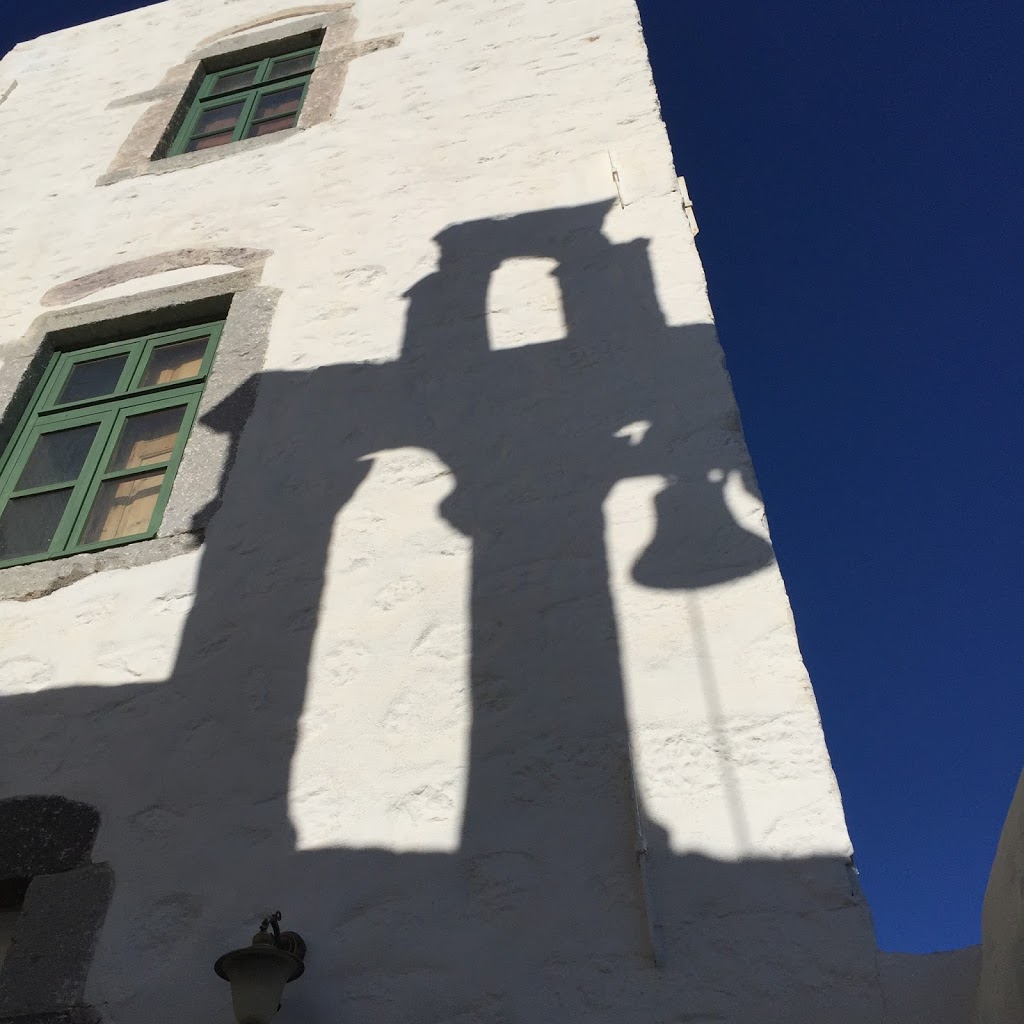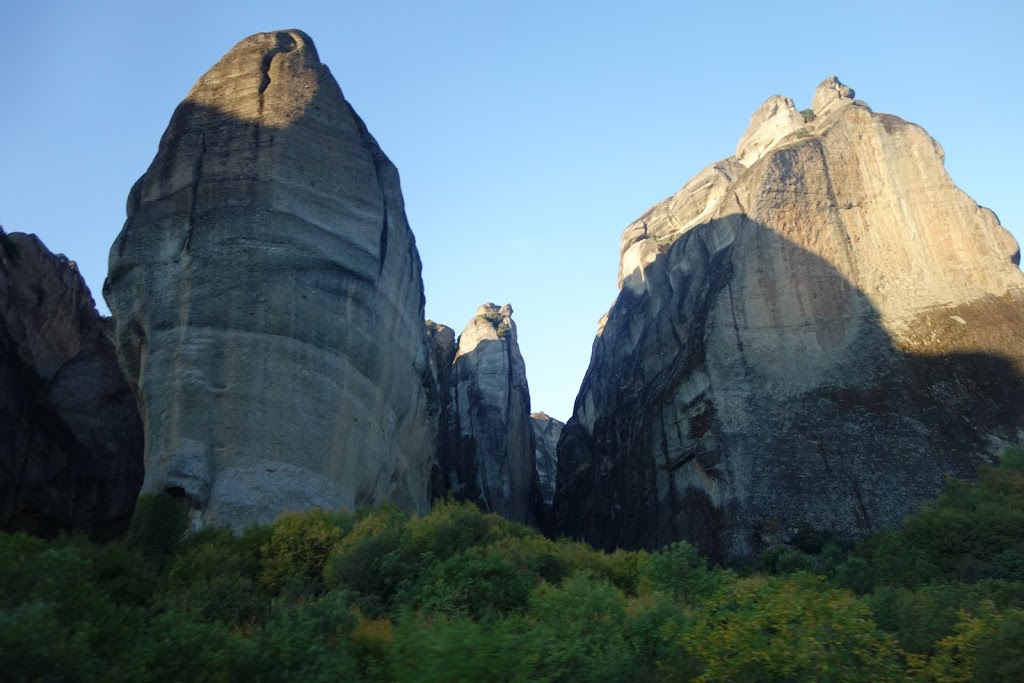What makes a site sacred? The atmosphere, the setting, the priests who declared it so, or the pilgrims who trek from far away to experience a oneness with their god or gods? Maybe all of the above.
My husband and I set out from Athens for a two-day trip first to visit sacred Delphi, once considered the center of the world. The following day we would visit another sacred site, Meteora, deep in the mountains of mainland Greece. The country’s economic woes were in full view, not only in the city with its empty store fronts, but even more so in the countryside where miles of abandoned buildings, some half-built, were everywhere that cotton fields weren’t. Fluffy cotton balls from the harvest drifted alongside the road to somewhat soften the scene on the fertile Plains of Thessaly before we began a climb into the mountains where, sadly, the roadways were lined in trash.
But religious sentiment was everywhere evident with dozens of tiny models of Orthodox churches, often painted the blue and white colors of Greece, placed near dangerous roadway curves where some unfortunate motorist met with disaster, or perhaps was saved from death by a miracle. We stopped for a coffee at a roadside stop where I slipped into a nearby chapel built for travelers who paused for a prayer before continuing their journeys. I lit a tall beeswax taper to join others casting glowing light on the icons painted in rich gold, red and blue.
We’d been to Delphi some years earlier. Set high on a steep slope not far from Mt. Olympus, it had been a quiet, mystical and enchanting experience with the ancient ruins overlooking groves of olive trees sweeping down to the bright blue sea. It was easy to imagine pilgrims coming to worship Apollo or wait in trepidation for the enigmatic prophecies of the fearsome Delphic Oracle who chewed on bay leaves and inhaled gases from a cleft in the rock for inspiration.
But would she have ever dreamed of today’s mass tourism with buses lined up to disgorge passengers who only wished to climb the marble-paved path to spend five minutes taking selfies before lunch? Perhaps she did, but we were too distracted by the noise and shoving to continue beyond the pillars of the Temple of Athena to climb the top of the hill where we’d previously sat to contemplate the mysteries of the past.
Giving up, we retreated to the quiet museum where we could marvel at the fragments of the treasures that have survived invasions and looting over nearly three millenia. The wonderfully-named chryselephantine heads made of ivory and gold depicting Apollo and and a haughty-looking Artemis brought to mind how religion has informed art until recently. The ivory is blackened by burning in one of the periodic desecrations by marauders or natural disasters, giving the gods an African appearance. I wondered if Picasso had seen them.
Nearby, is another treasure: pieces of a gold and silver life-size bull. Other rooms hold statuary, building fragments, curious egg-shaped pieces that represent the navel or center of the Greek world, and a gigantic sphinx.
And no one who has ever seen The Charioteer can forget the perfect serenity of the slender young man as he holds the reins to guide his horses to victory.

But my favorite is the small bowl finely painted with a scene of Apollo, the god of the sun, healing, music, and poetry, holding his lyre and pouring a libation while a sacred raven perched on a branch listens. What ancient tune did the god play? If we could hear it now, would we feel close to a sacred state?
All photos copyright Judith Works
Like this:
Like Loading...
TAGS



